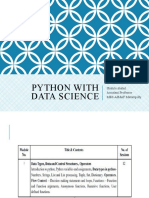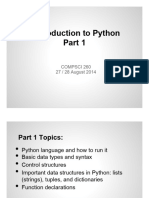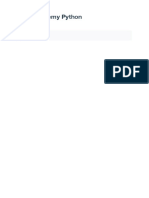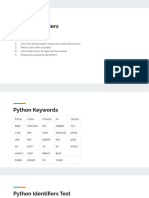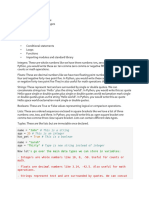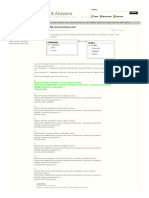0% found this document useful (0 votes)
35 views23 pagesPython Lec1
The document provides an introduction to Python programming, covering its features, basic syntax, data types, and structures such as variables, lists, dictionaries, and functions. It includes practical exercises for users to practice input/output operations, conditional statements, loops, and object-oriented programming concepts. Additionally, it discusses file handling and the use of classes and objects in Python.
Uploaded by
sanjidaoishi26Copyright
© © All Rights Reserved
We take content rights seriously. If you suspect this is your content, claim it here.
Available Formats
Download as PDF, TXT or read online on Scribd
0% found this document useful (0 votes)
35 views23 pagesPython Lec1
The document provides an introduction to Python programming, covering its features, basic syntax, data types, and structures such as variables, lists, dictionaries, and functions. It includes practical exercises for users to practice input/output operations, conditional statements, loops, and object-oriented programming concepts. Additionally, it discusses file handling and the use of classes and objects in Python.
Uploaded by
sanjidaoishi26Copyright
© © All Rights Reserved
We take content rights seriously. If you suspect this is your content, claim it here.
Available Formats
Download as PDF, TXT or read online on Scribd
/ 23














